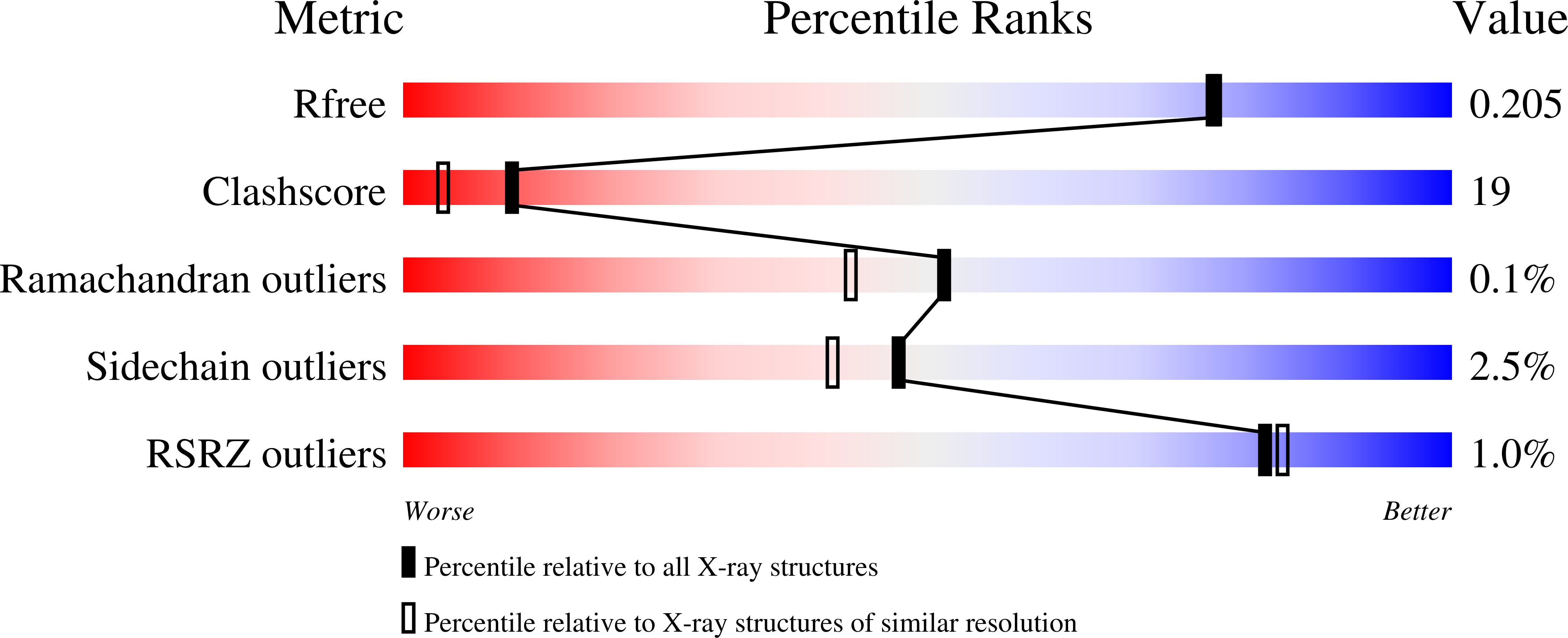First determination of the inhibitor complex structure of human hematopoietic prostaglandin D synthase.
Inoue, T., Okano, Y., Kado, Y., Aritake, K., Irikura, D., Uodome, N., Okazaki, N., Kinugasa, S., Shishitani, H., Matsumura, H., Kai, Y., Urade, Y.(2004) J Biochem 135: 279-283
- PubMed: 15113825
- DOI: https://doi.org/10.1093/jb/mvh033
- Primary Citation of Related Structures:
1V40 - PubMed Abstract:
Hematopoietic prostaglandin (PG) D synthase (H-PGDS) is responsible for the production of PGD(2) as an allergy or inflammation mediator in mast and Th2 cells. We determined the X-ray structure of human H-PGDS complexed with an inhibitor, 2-(2'-benzothiazolyl)-5-styryl-3-(4'-phthalhydrazidyl) tetrazolium chloride (BSPT) at 1.9 A resolution in the presence of Mg(2+). The styryl group of the inhibitor penetrated to the bottom of the active site cleft, and the tetrazole ring was stabilized by the stacking interaction with Trp104, inducing large movement around the alpha5-helix, which caused the space group of the complex crystal to change from P2(1) to P1 upon binding of BSPT. The phthalhydrazidyl group of BSPT exhibited steric hindrance due to the cofactor, glutathione (GSH), increasing the IC(50) value of BSPT for human H-PGDS from 36.2 micro M to 98.1 micro M upon binding of Mg(2+), because the K(m) value of GSH for human H-PGDS was decreased from 0.60 micro M in the presence of EDTA to 0.14 micro M in the presence of Mg(2+). We have to avoid steric hindrance of the GSH molecule that was stabilized by intracellular Mg(2+) in the mM range in the cytosol for further development of structure-based anti-allergic drugs.
Organizational Affiliation:
Department of Materials Chemistry, Graduate School of Engineering, Osaka University, Suita, Osaka 565-0871.


















